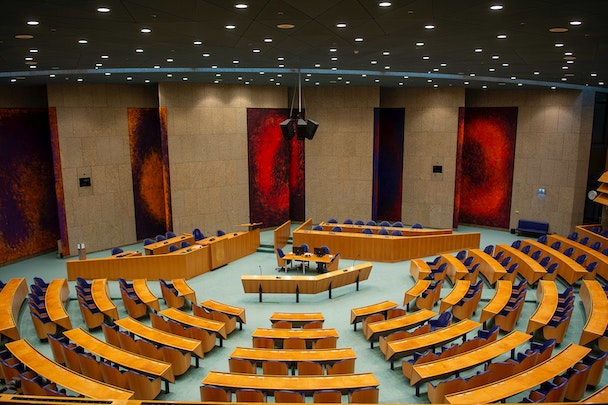Can a joint broadcaster committee really transform TV advertising in the US?
US broadcasters recently put their differences aside to solve TV’s measurement crisis by forming the Joint Industry Committee (JIC). Andrew Rosenman, global product marketing lead at adtech provider Equativ, asks if the JIC will succeed.

US broadcasters form the Joint Industry Committee (JIC) / Pexels
Moving to shape and supervise cross-platform video measurement certification feels like a big power play. And, to an extent, that’s what it is. As the industry shifts further away from broadcast and towards unicast ad delivery, programming heavyweights are aiming to shore up their marketplace control by becoming chief administrators of the multi-currency future.
Major media sellers aren’t the only players who stand to gain. Such broad collaboration could be just what’s needed to help tackle rising complexity across the digital video space and to drive advertising growth that benefits everyone; especially if the committee fulfills its promise of building a transparent, inclusive and independent measurement ecosystem.
But behind this positive potential, there are several questions about how successful the new JIC will be in evolving measurement processes, as well as fueling the adoption of alternative currencies.
Advertisement
Will network standards make any difference?
One obvious starting point is the upfronts’ diminishing draw. With advertisers already unsure about their value, it’s hard to tell how much the unknown quantity of additional metrics will add to the buy-side appeal, or whether it will boost the proposition offering at all.
Similarly, major networks are experiencing their own steady decline in dominance. As digital platforms such as YouTubeTV and constantly multiplying free ad-supported streaming TV channels claim greater viewer attention, the likes of NBCUniversal and Warner are seeing their market position erode.
Typically reaching wider groups of linear viewers, broadcasters still offer desirable reach for key target audiences but hold less scale than just a few years ago. In fact, my recent conversations with advertisers at the Consumer Electronics Show underlined that what buyers want from media companies is mostly about consistent, sustainable and projectable reach – with the enhanced measurement as a corollary desire. Networks’ greatest concern remains the rapid fall of viewership and ratings on premium TV networks, which ranged anywhere from -6% to -34% in 2022.
Advertisement
Will implementing changes cause even more confusion?
Rolling out different approaches to cross-media measurement could get complex, quickly. For advertisers planning models rooted in Nielsen data-favored mixed media, including running TV campaigns via partners committed to sourcing insights from Nielsen while also experimenting with new audiences via the OpenAP. And as advertisers grapple with simultaneous campaigns, there is a chance this operational strain might dampen enthusiasm.
At the same time, it’s important to remember that long-established forces have a history of acting as fast followers and fending off upstart competition by translating the innovative features they see emerging in the marketplace into their own core services.
Currently readying the ‘Nielsen One’ project, it seems Nielsen is doing just that and could still be in a position to dictate to both programmers and advertisers what an acceptable currency is, as well as what proportion of that currency is composed of new methods and practices.
What does the new system involve?
Announcements around providing access to programmer data for third-party measurement vendors, external verification, and willingness to collaborate are encouraging. But the JIC has a way to go with clarifying details and improving industry involvement.
For now, the committee doesn’t represent members of the ecosystem who will have a vital role to play in deciding whether alternative measures can be properly adopted.
For instance, SmartTV OEMs and CTV device providers have made substantial investments in their own ACR measurement platforms, and they will be essential to ensuring that whatever measurement regime is implemented can reach all corners of viewers, regardless of their platforms of choice.
Moreover, the eagerness to downplay current measurement challenges is interesting to note. In response to an article in the Wall Street Journal spotlighting issues with frequency capping and authenticating reach on streaming platforms, one member of the consortium posted a distinctly rose-tinted blog. While acknowledging the top-line difficulties, its main message of focusing on progress instead of problems felt a bit too sweeping for comfort.
Advertisement
News that the committee will offer MRC certification is another good sign that should be welcomed by advertisers as at least an attempt to validate the data methodology’s integrity. But it also seems that any advertiser approaching this new model will likely need to execute their own evaluation and analysis, to make sure they know and understand what they’re getting and what it means to their bottom line.
For now, the shared venture raises so many questions that’s ultimate value is impossible to predict with any kind of accuracy. If it can create new standards the entire industry can embrace – not just mega programmers — if it secures industry confidence and adoption, and if there is verifiable proof of effectiveness, then this could be pushing the TV industry into a new phase of efficiency and clarity. But the media industry has typically worked at a glacial pace, and it’s unclear if advertisers will demonstrate the level of patience that will be required.
Andrew Rosenman is a global product marketing lead at adtech provider Equativ.